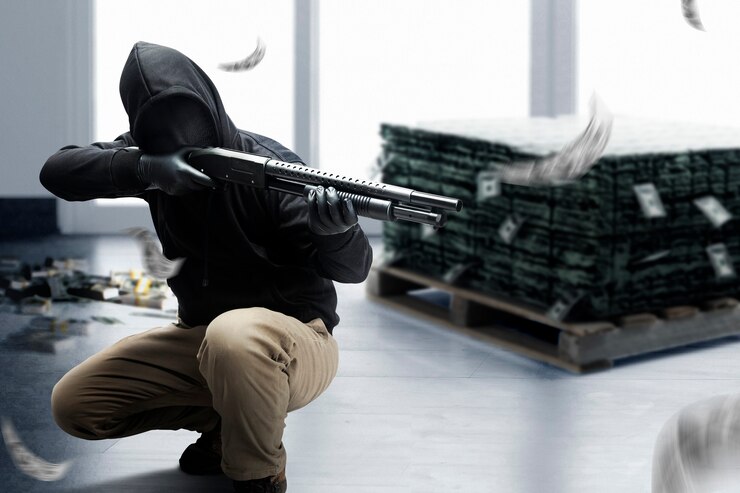When storing firearms, finding the right balance between security and accessibility is essential for responsible gun ownership. A gun safe serves as both a protective barrier and a storage solution, safeguarding your firearms from unauthorized access while allowing you to retrieve them quickly when needed. However, this balance can be difficult to achieve, as prioritizing one often compromises the other. We will explore the key factors to consider when selecting gun safes for sale at Alpine Safes, including the importance of access speed, security features, and finding a compromise that fits your needs.
Security Considerations in Gun Safes
The primary function of a gun safe is to provide security by protecting firearms from theft, unauthorized access, and potential misuse. The level of security provided by a gun safe depends on various factors, including the materials used, the locking mechanisms, and the construction of the safe itself. Gun safes with thicker steel walls, reinforced corners, and high-quality locks offer stronger protection against forced entry. Additionally, a safe with a robust fire-resistant rating can help protect your firearms and documents from damage in the event of a fire.
When evaluating a gun safe for security, it is important to look for models that offer resistance to tampering or drilling. Some safes feature advanced locking systems, such as biometric fingerprint scanners, digital keypads, or mechanical locks, which can deter unauthorized users from gaining access. While these features enhance security, they also significantly determine how accessible the safe will be when needed. The more security features a safe has, the more time it might take to access its contents, which brings us to the challenge of balancing security with accessibility.
Accessibility Factors to Consider
Accessibility refers to how quickly and easily a firearm can be retrieved from the safe in a moment of need. Quick retrieval can be crucial in situations where immediate access is required—such as for home defense or emergency scenarios. The challenge, however, is ensuring the safe remains secure while allowing fast access. Different types of locking mechanisms affect the speed of access in various ways. Biometric safes, for example, offer fast access through fingerprint recognition, which can be ideal for quick retrieval in high-stress situations. Similarly, digital keypads can provide a quick code entry for access, although these may present risks if someone else learns the code.
Another factor influencing accessibility is the physical location of the safe. If the safe is stored in a difficult-to-reach or concealed area, it may be harder to access during emergencies, despite the level of security. Safes mounted to the wall or hidden in furniture can be excellent for security but may slow retrieval time. As a result, it’s important to find a location that allows for both rapid access and proper security measures.
Balancing Security and Accessibility
The key to finding the right balance between security and accessibility in a gun safe lies in understanding your specific needs and assessing the potential risks and scenarios that could arise. For instance, if you live in an area with a higher risk of break-ins, you may want to prioritize security over accessibility. In contrast, if you use a firearm for home defense, you might opt for a model that allows quicker access, even if it slightly sacrifices security.
A practical approach is to combine different types of safes and storage solutions. For example, you might use a small, quick-access safe with a biometric lock to provide emergency access to a firearm while keeping a larger, more secure safe for additional weapons and valuables. This hybrid solution offers fast access to certain firearms and added protection for others, allowing you to address various needs without compromising security or accessibility.
Different Locking Mechanisms and Their Impact on Both Security and Accessibility
The type of locking mechanism on a gun safe plays a significant role in both its security and accessibility. Mechanical locks, which require a key or combination, provide a high level of security due to their simplicity and lack of reliance on electronic components. However, they can be slower to open, particularly in high-stress situations, which could hinder accessibility. On the other hand, electronic locks and biometric locks allow for faster access. Still, they come with potential vulnerabilities, such as power failure or the risk of someone learning your access code.
Electronic and biometric safes are increasingly popular because they provide a more streamlined user experience with quicker access. Biometric locks rely on fingerprint recognition and are especially valuable for individuals who may not want to fumble with keys or codes under pressure. These systems are generally more secure than simple key locks because they require a unique biometric identifier. However, they can be more expensive and require maintenance, such as ensuring that the scanner remains functional and clean.
Safe Location and Accessibility
Where you place your gun safe is crucial in determining how easily you can access it in an emergency. Storing a safe in a hidden location, such as a basement or a remote room, might protect it from theft but could slow down access when every second counts. Conversely, storing it in a more accessible location may increase the risk of unauthorized access. Therefore, a well-thought-out location should be chosen based on the need for security and speed.
Achieving the right balance between security and accessibility in a gun safe is a nuanced challenge that depends on various factors, such as locking mechanisms, placement, and personal needs. Understanding the trade-offs between these two aspects is essential for responsible firearm storage. While prioritizing security may offer peace of mind, ensuring that firearms can be accessed quickly in an emergency is equally important. By carefully considering the features of different safes, combining secure storage with quick-access solutions, and evaluating technological innovations, gun owners can find the optimal balance that meets their security and accessibility requirements.







